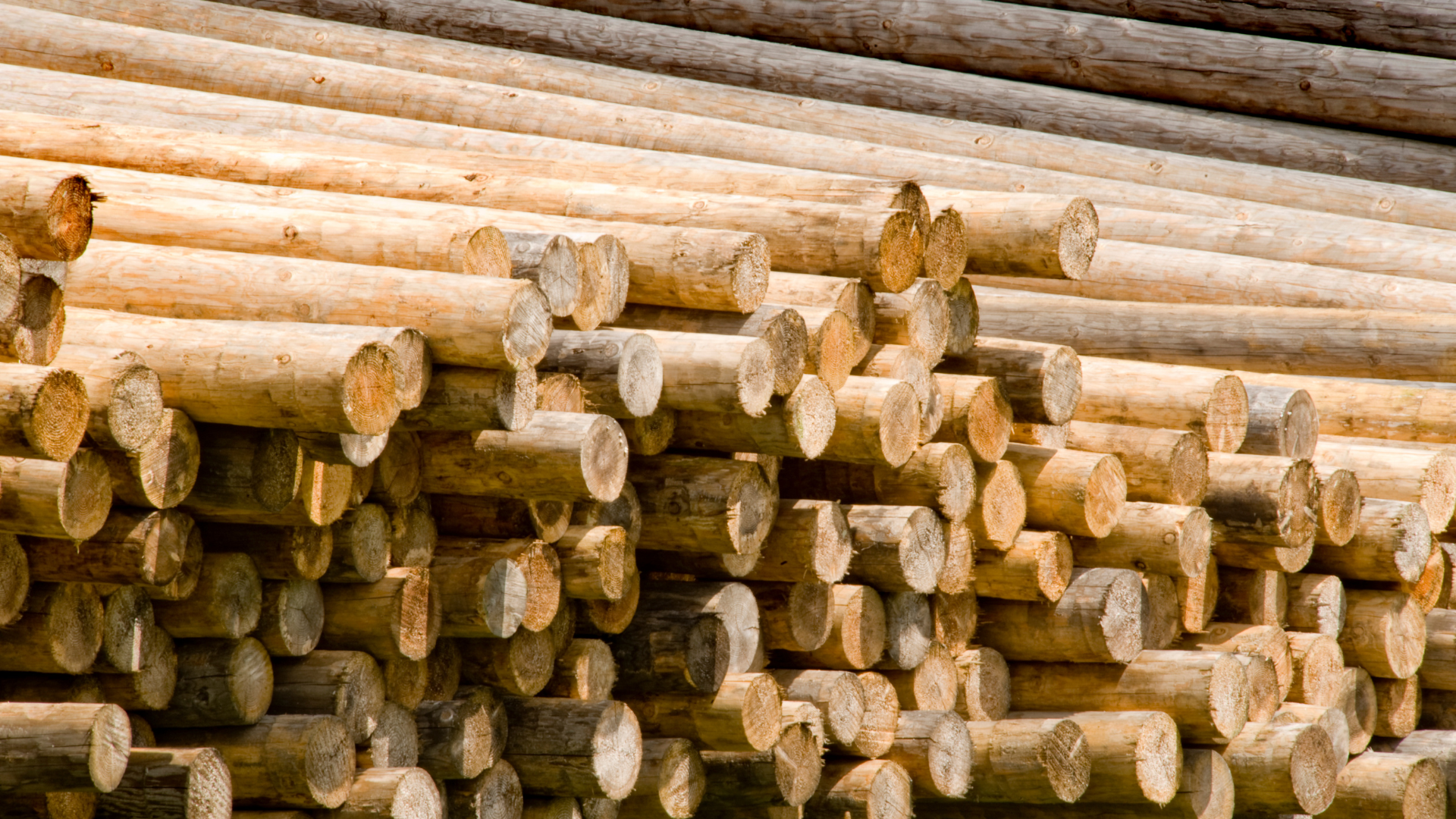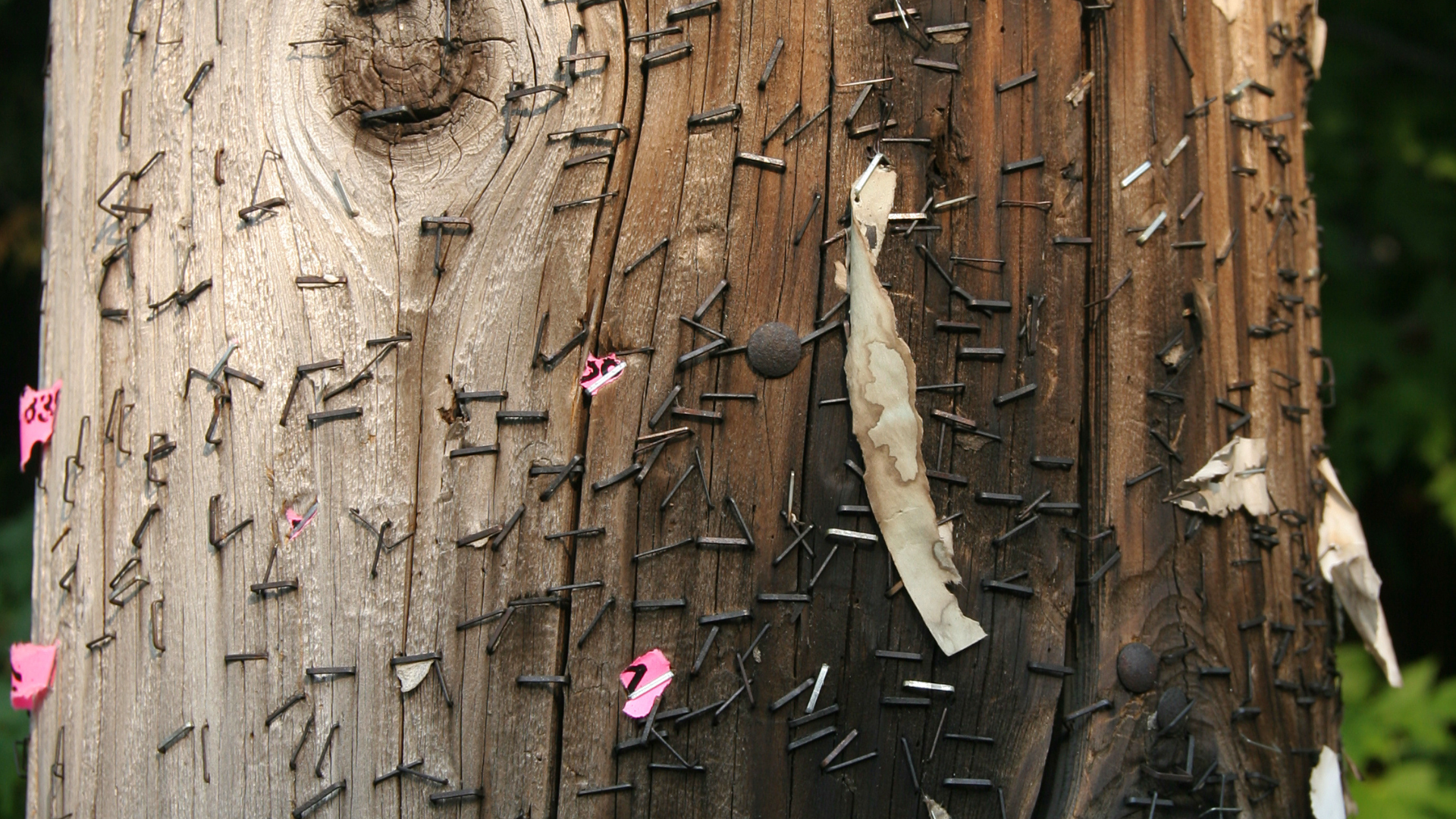Used telephone poles: Things to consider before milling
Used utility poles may seem like great material for milled lumber but are often filled with dangerous chemicals
Someone is selling used telephone poles on Facebook Marketplace and maybe you're wondering if you could mill them using your portable sawmill?
While these seem like a great source of lumber, many sawyers stay away from these materials due to the health hazards associated with them. Others say they use an abundance of caution before handling these logs and are always careful to stay safe and use the right PPE.
"I think it sounds nasty, I’m not gonna do it," says Brian, a sawyer and member of the Woodland Mills Product Owners and Community Facebook group in a discussion where many debated the topic. Joe, another member of the group, says whenever he handles them he's careful and always wears a respirator, goggles and a disposable paint suit.
While some sawyers might try to turn these timbers into useable lumber, there are plenty of dangers associated with wooden poles used for telephone or utility poles. You should use an abundance of caution when handling or utilizing these poles. Here's what we've found about them:
Why sawyers use telephone poles
All over the world wooden poles are used for utility or telephone lines. A large segment of the timber industry goes towards making new and replacement telephone poles, and utility companies, townships and counties purchase and use them by the hundreds or thousands.
While more places are using concrete poles or burying their lines underground, there are tens of thousands of wooden poles which are either unneeded or are past their prime.
Telephone poles are often made of hardy species like western red cedar, douglas fir, red pine and others. Oftentimes these timbers are considered desirable in the aftermarket due to how straight and long they are. They come in good diameter for milling and are already de-barked and processed. Many sawyers are happy to mill these instead of felling trees due to how convenient they are and how much lumber they can yield.
Some property maintenance companies, townships or utility companies will sell their used telephone poles on the aftermarket for a fraction of what was originally paid for them. This inventory of timber can be very tempting because you can buy it cheap and turn it into milled lumber quickly.

Staying sustainable
The desire to reuse existing materials is at the heart of the sawyer community. Many sawyers will try to find pre-used logs to mill up on their portable sawmills.
There are lots of advantages to recycling these logs:
-
-
You don't have to fell any trees
-
You're preventing these logs from ending up in the landfill
-
These logs often have a lot of charm and character due to their age
-
In many cases these are high quality logs which are suitable for milling, but have outlived their original uses. Beyond just telephone or hydro poles, there are other wood materials that are thrown away or chipped by townships, counties and tree services which might be reused.
If you're interested in salvaging logs, here are some placed you may want to check:
-
-
Tree care companies, which will often prefer selling or giving away logs to paying to dispose of them
-
Local disposal sites, provided this is allowed by your local bylaws
-
After storms, helping to dispose of neighbours logs or fallen trees can benefit everyone
-
Facebook Marketplace can be a great place to find recycled logs
-
Why you may want to be careful
Logs which have previously been used as telephone or hydro poles often have been chemically treated before they're put in the ground. These wood poles are intended to serve their purpose for many years, and have to be located on busy road ways where they're exposed to rain, cold, heat and salt. Part of the pole is also buried underground, requiring chemical treatment to prevent it from rotting due to moisture.
Many different chemical preservatives have been used to treat wood poles. It would take far too long to list them all here. Many of these chemicals, some of which have been since banned, are no longer used due the discovery of risks to human health upon exposure.
Some of the chemicals used for telephone pole treatment include:
-
-
Creosote
-
Pentachlorophenol (Penta)
-
Copper Naphthenate (CuNap)
-
Different arsenical Compounds (chemicals containing arsenic)
-
Creosote is a common chemical used in treating utility poles or railway ties. According to the US Environmental Protection Agency, Creosote has been used since the 1800s for a variety of purposes, namely as a low-cost solution to treating wood.
"Creosote poses cancer and non-cancer health risks of concern to workers in wood treatment facilities. EPA did not find health risks of concern for the general public, nor for workers who handle creosote-treated wood after application," says the agency.

Risks when milling
So, what's the concern?
While hydro poles are considered safe for the public while standing, when the wood is cut open, it has the potential to create a hazard.
-
- The chemical treatment can potentially become airborne and breathed in as sawdust when milled
- Contaminated sawdust could also sit on your workshop floor and cause exposure over time
Direct contact with these chemicals briefly, repeatedly or over a long period of time could potentially have devastating impacts on your health.
According to the EPA, individuals who have come into possession of Creosote-soaked wood can safely dispose of it without issue. But they warn to not attempt to burn it, as doing so will release the hazardous chemical into the air and cause injury.
While there are no EPA regulations preventing someone from milling and reusing Creosote-soaked wood, it's generally advised you show a high amount of caution before handling it. For most sawyers, they say it's simply not worth dealing with the hazards of this treated timber, and many avoid handling it for this very reason.
Paul, a sawyer and Facebook community member, calls it a "bad idea on top of bad wood." He instead suggests using the poles whole for an outdoor project where they don't need to be milled.
Is the entire log treated?
This is a very important question. In many cases, the entire log is not necessarily treated, just the part of the log that's buried underground.
Chris, another sawyer, says he's handled over 100 wooden hydro poles and he simply removes the problematic end before milling.
"These are 60 year old high tension poles being replaced with steel poles and have some creosote still on them in places. The butts have been cut off and disposed," he says.
If you're cautious and wear the proper breathing and skin protection, you may be able to remove the treated part of the log. This may be a great way to recycle these logs without dealing with the chemically treated part.
It's also possible the entire log has been treated, in which case it wouldn't help to cut off the part of the timber that's been underground.

Hidden metal inside
One of the other main reasons why some sawyers will avoid dealing with telephone poles or other salvaged wood is because of the high risk of metal inside of them.
Nails, screws and staples are commonplace on utility poles, and these little metal obstructions can potentially cause damage to your bandsaw blade, ruining your cuts.
Many sawyers will go over the entire length of these wood poles with a metal detector to try and find any metal objects, but some of them can be difficult to find. Some poles in high-density areas may be covered in staples or nails and removing them all could prove difficult.
"Creosote and iron, not good for blades nor lungs," says Douglas, another Woodland Mills sawyer.
Before milling any telephone poles or other recycled logs, check for chemical treatment as well as nails or other metal objects and assess whether you want to continue. If you do, show a high level of caution and remove any of the affected areas before milling.
Creative reuse
Many sawyers say they will handle and mill these timbers, while others say it's simply too dangerous and avoid it entirely.
If you come into possession of these wooden poles, you should handle them with a great deal of care. Use proper personal protective equipment when handling it.
If you decide not to use these poles, they can safely be disposed of, but reach out and talk with your local waste disposal agency first to ensure you're following all possible regulations.
There are lots of reasons why sawyers are looking for great materials to reuse. Just show the right amount of care so you can continue milling sustainably and building your projects for many years to come.
SHOP SAWMILLS
HM122
The HM122 portable sawmill, packaged with the rugged Bushlander® trailer for complete mobility, loaded with features like the RapidChange® blade system, auto lube and more.
HM126
The sawyer favourite HM126 portable sawmill, packaged with the Woodlander® trailer for complete mobility, ideal operation height and easy storage.
HM130MAX®
The wide capacity HM130MAX® portable sawmill, packaged with the Woodlander® trailer for complete mobility, comfortable operation height and easy storage.
HM136MAX™
Our widest-capacity portable sawmill, the HM136MAX™, packaged with the Woodlander® trailer to make it easy to take anywhere and easy to store.
Join the Woodland Mills Community Facebook group. Search advice and insights from over 65,000 knowledgeable, supportive members.
- Pre-purchase considerations
- Sawmill set-up support
- Project inspiration photos and videos
- Community troubleshooting support
